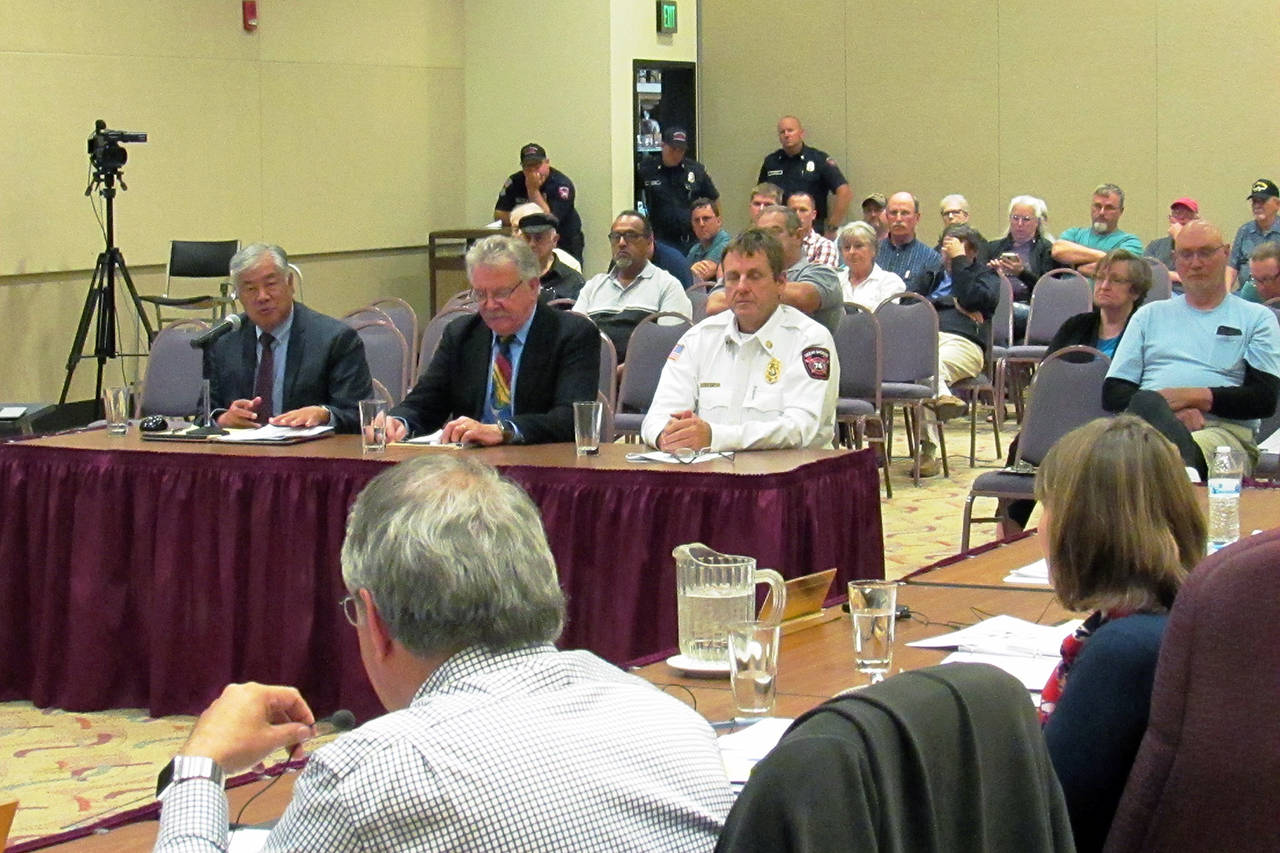The Ocean Shores City Council by a 5-2 vote agreed on Monday to proceed with the Point Brown Avenue redesign project to add sidewalks, bike and pedestrian pathways, crosswalks and other improvements along the city’s main business corridor.
But the council also did not choose one of the recommended alternative design concepts, and instead asked to have the city’s consultants come back and explain what other alternatives might be considered.
With council members Holly Plackett and Jackie Farra voting against a motion to proceed with the design process that started in 2013, most of the public comments also were against going forward with the project, which so far has been funded by grants.
“If the council votes for this tonight, it will be against the wishes of the citizens,” said Susan Conniry, a council candidate and Planning Commission member.
City Public Works Director Nick Bird presented the case for moving forward, pointing to a fact sheet the city has issued about the project’s funding and benefits.
“I wouldn’t have pushed this hard and this far if I didn’t think we would succeed,” Bird said. The fear he expressed was that the city would lose potential funding sources and potentially have to pay back some of the funds already used if it didn’t proceed with the project.
“We have been working toward making our downtown corridor safer and more efficient, and aesthetically better than what it is today,” Bird said. In particular, Bird has advocated a phased-in plan where half of the project would be completed first before going forward with completion.
“A number of decisions are necessary in order to proceed with the Point Brown Sidewalk Project,” a council summary said. “First, we need to confirm that council approves proceeding with the project design. Second, we need to confirm the preferred design alternative and that we only intend to complete the first segment (southern half) with the current grant funding.”
The current proposal would create ADA accessible 15-foot shared-use sidewalks on both sides of the roadway, lighted pedestrian crossings, on-street parking, pedestrian and street illumination, storm water collection and treatment, and two roundabouts. The total cost is estimated to be approximately $15.4 million, and the city currently has $683,350 in federal grant contributions and $59,400 from Grays Harbor County.
“We anticipate two large grants will provide $4 million and $1.9 million respectively. That is approximately $6,645,000 in secured and planned grant funding,” the fact sheet said.
While the council did confirm by its initial vote that it wanted to continue with the project, the design and scope still is uncertain. Another council candidate as well as a former councilman, Bob Crumpacker, noted the upcoming election could affect four of the seven positions on the council, and he suggested putting off a decision: “You want to weigh the uncertainty very carefully before you move forward.”
“If we stop now, we have nothing,” said Councilman John Lynn, voting to proceed with Lisa Griebel, Jon Martin, Gordon Broadbent and Bob Peterson.
SMP approved
In other action Monday, the council also approved the final Shoreline Master Program update.
The shoreline document is required by the state Department of Ecology, which must approve the policies the council endorsed after a process that involved the Planning Commission, a citizens advisory panel and several public presentations as part of the process. The SMP must include updated regulations “to protect critical areas within shorelines of the state.” It includes a shoreline inventory of the diverse shorelines both saltwater and freshwater in Ocean Shores, and designates those areas with critical area regulations. It also includes Ocean Shores’ shorelines restoration plan.
EMS study
The council also received a draft report fr0m its Emergency Medical Services (EMS) consultants, Peter Moy and John Montanero of Financial Consulting Solutions Group.
The key elements of the report note that city code provides for ambulance service to be operated as a public utility, and that the City Council is authorized to set and collect rates based on a cost of service study. It lists 5,534 single-family customers, 427 multi-family, 50 in nursing homes, 344 commercial, 332 motels/hotels, and two public schools, for a total of 6,689.
Some of the key assumptions on costs include the following:
• Fire and EMS administration staff costs based on incidents (9% Fire, 91% EMS)
• Firefighter and Paramedic costs allocated based on total response time (4% Fire, 96% EMS)
• Other costs allocated based on other factors such as square feet, number of calls, all to fire, all to EMS, etc.
• Personnel costs allocated by availability demand ratio (86% availability, 14% demand), supplies and facility costs allocated to availability, dispatch services allocated to demand
• Out of City demand time is 14% of total demand time, so out of City availability time is 14% of the assumed standby time.
The report included several rate scenarios to pay the costs based on several other factors, such as maintaining staffing levels, offsetting the expiration of federal grant money to hire the newest seven firefighters, and factors such as general inflation of 2.1 percent and salary and benefit increases of 2.6 percent.



